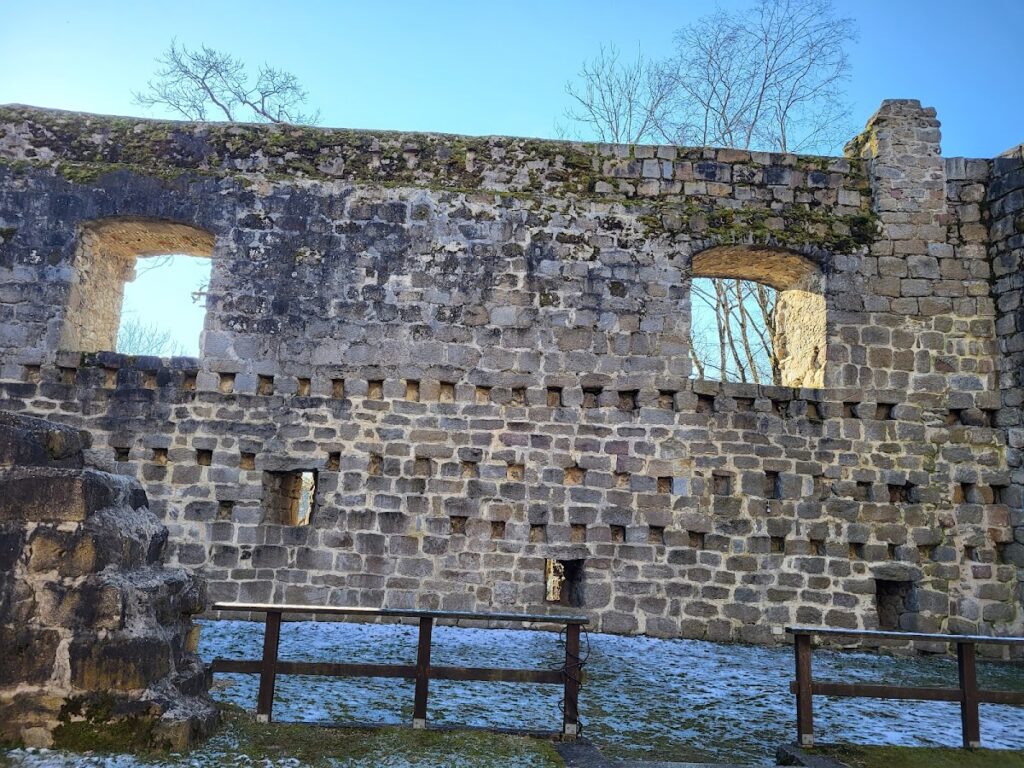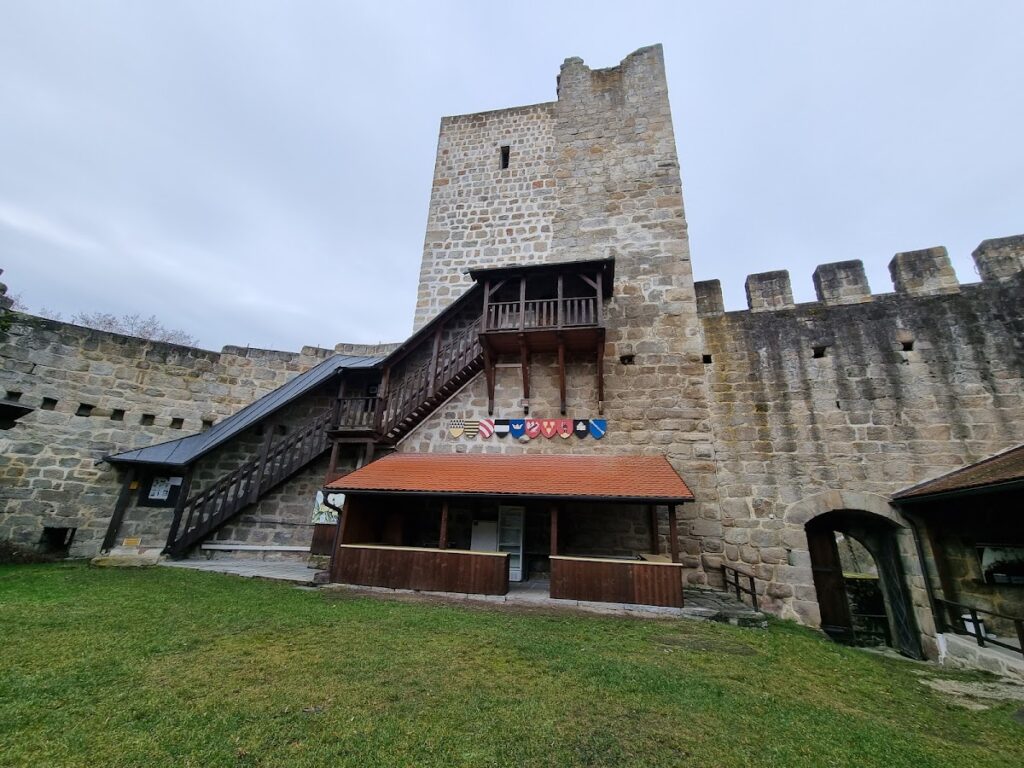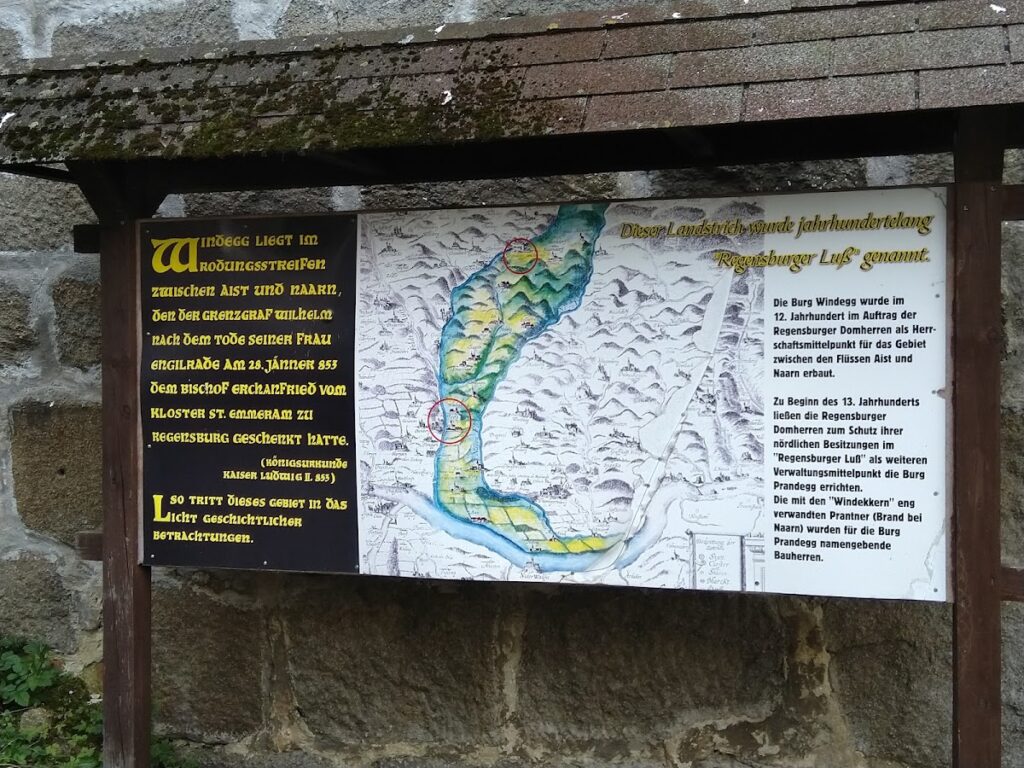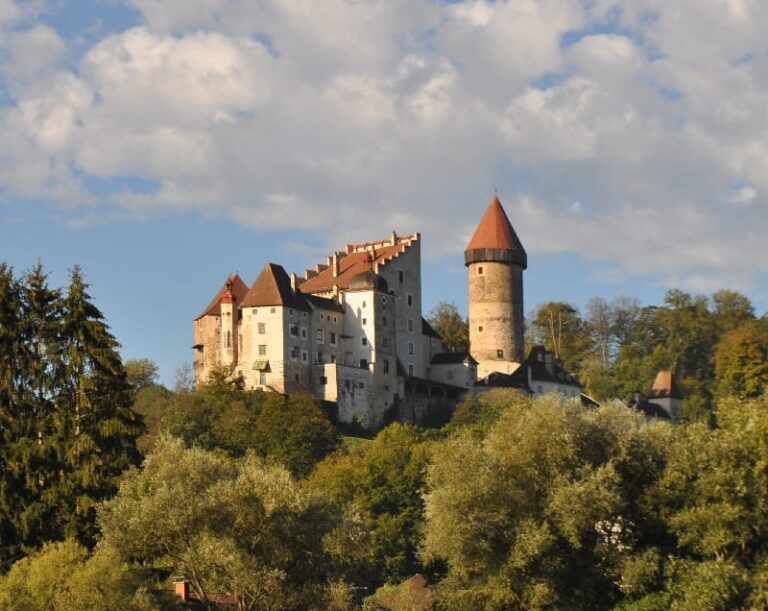Burgruine Windegg: A Medieval Hill Castle in Austria
Visitor Information
Google Rating: 4.7
Popularity: Low
Google Maps: View on Google Maps
Country: Austria
Civilization: Unclassified
Remains: Military
History
Burgruine Windegg is a hill castle situated near the municipality of Schwertberg in present-day Austria. It was constructed during the Middle Ages by a German-speaking civilization, likely under the direction of local nobility associated with the Regensburg bishopric.
The castle’s origins trace back to approximately 1170 or 1180, with probable founders being members of the Lengenbach family. This family played a role as cathedral advocates, responsible for protecting and managing church properties belonging to the bishopric of Regensburg within the Duchy of Austria. The first written record of Windegg appears in 1208, naming Dietricus de Windeke, a ministerial servant of the Lengenbachs, as its administrator. The Lengenbach lineage ended in 1236 following a dispute with Duke Frederick II, who confiscated the fiefdom. Subsequently, King Ottokar II Prîmysl granted the area, including Windegg and other Regensburg estates, to his followers Albero V and Heinrich II of Kuenring, the latter known for constructing the nearby Schwertberg Castle.
Throughout the late 13th century, the ministerial officials associated with Windegg continued their service under new lords, with documented activity until 1270. Ownership of the castle passed through numerous noble families over the following centuries, including the Kuenrings, Kapellens, Wallseers, Schaunburgs, Scherffenbergs, and Tschernembls, each contributing to its legacy. In 1594, Windegg notably provided shelter amidst rising Ottoman incursions in Central Europe.
In the early 17th century, Georg Erasmus von Tschernembl obtained the castle as a freehold property. However, he fled the region during the Counter-Reformation upheavals in 1620, leading to its acquisition by Count Leonhard Helfried von Meggau, an imperial steward. Through a marriage alliance, ownership transferred in 1644 to the Starhemberg family and then in 1675 to Count Heinrich Lobgott Kuefstein. After this period, the castle’s strategic importance declined, shifting primarily to use as a storage facility.
In more recent centuries, Windegg remained privately owned, passing through the Thürheim family from 1724 until 1899, followed by Baroness Therese von Schwitter and later Count Alexander Hoyos and his descendants, who still retain ownership. Since 1980, a local association has worked to conserve and restore the castle ruins, preserving its historical presence.
Remains
Perched atop a rocky spur rising 315 meters above the valley of the Windeggerbach stream, Burgruine Windegg occupies a commanding position with two main enclosures. The core of the castle covers just over 1,000 square meters, while an adjacent outer bailey extends across more than three times that area. The entire construction demonstrates a distinctive style rare for Upper Austria, built using Romanesque buckelquader, which refers to squared stones with prominent rounded bosses, lending the walls a textured surface.
One of the castle’s most notable surviving elements is its bergfried, or keep—a tall defensive tower standing approximately 25 meters high, with a square base measuring 10 by 10 meters. Its walls are impressively thick, between 2.20 and 2.50 meters, designed to provide strength and protection. The bergfried retains its original elevated entrance, situated on its first floor facing the courtyard. Although the doorway is currently vulnerable and at risk despite restoration attempts beginning in 1980, it remains an important feature demonstrating medieval defensive architecture.
Surrounding the inner castle is a substantial ring wall, reaching up to eight meters in height and two meters in thickness. The eastern section of this wall, including the main gate, has undergone repairs as part of the modern conservation efforts. These fortifications once formed a robust barrier safeguarding the residential and service buildings within.
Within the castle grounds, the foundational remains of the palas—the principal residential building—have been identified. Dating back to the castle’s initial construction phase, the palas foundations include narrow slit windows, which provided minimal light while allowing defense against attackers. There are also vestiges of other living quarters and a castle chapel, which historically played a role in protecting the access gate, although only remnants endure today.
Since the 1980s, volunteer-driven restoration work has largely reconstructed the bergfried and the palas foundations, stabilizing the ruins and enabling the structures to stand prominently once again. The preserved remains now serve as a cultural focal point, with the bergfried repurposed as a venue for art exhibitions known as the “Gallery in the Tower.” The entire site sits near the Windeggerbach stream, just above the cultural center called Kulturhaus Lichtenwagner, linking the castle’s historic setting with contemporary local life.










